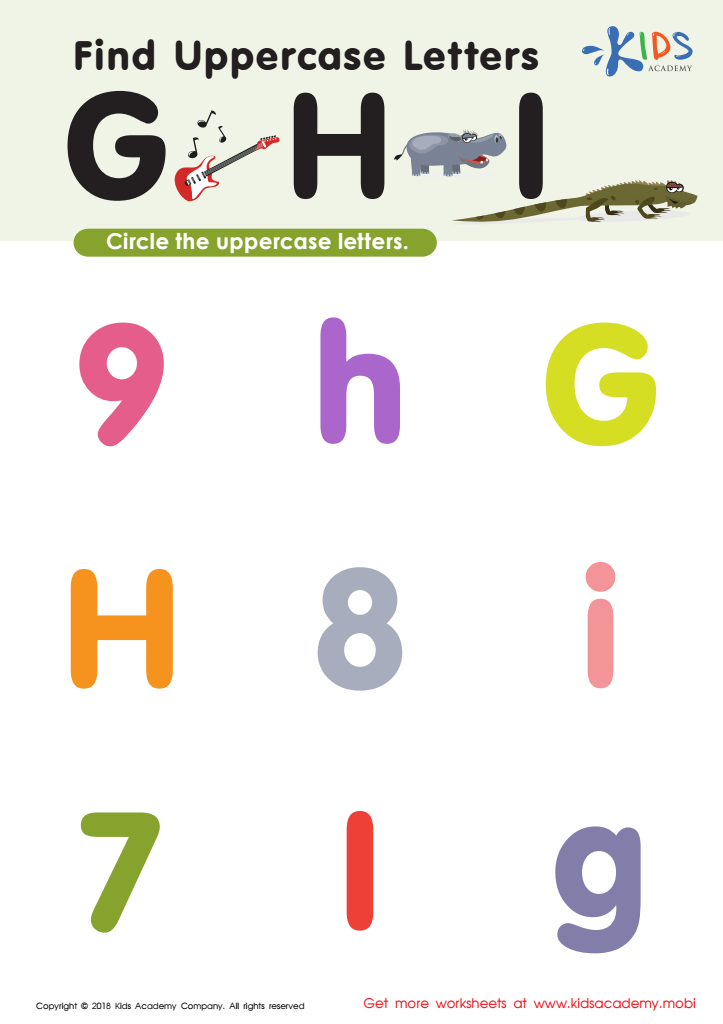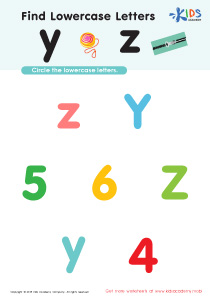Alphabet familiarity Normal Uppercase Letters Worksheets for Ages 4-8
4 filtered results
-
From - To
Enhance your child's alphabet familiarity with our interactive Normal Uppercase Letters worksheets, specifically designed for ages 4-8. These engaging activities promote letter recognition, essential for early literacy development. Each worksheet encourages children to identify, trace, and connect uppercase letters through fun exercises that spark their curiosity and creativity. Our visually appealing format and carefully crafted exercises cater to various learning styles, ensuring a holistic educational experience. Whether used at home or in the classroom, these worksheets are perfect for building foundational alphabet skills. Start your child’s journey to reading with confidence today and watch their language skills flourish!


Find Uppercase Letters G, H, and I Worksheet


Find Uppercase Letters Worksheet


Find Uppercase Letters J, K, and L Worksheet


Find Uppercase Letters A, B, and C Worksheet
Alphabet familiarity, particularly with uppercase letters, is crucial for children aged 4 to 8 as it serves as the foundation for literacy development. During these formative years, children are developing essential skills in reading and writing, making it imperative that they recognize and understand the purpose of uppercase letters. Familiarity with these letters helps children learn to decode words, a skill that is significant for early reading comprehension.
Furthermore, uppercase letters are frequently encountered in everyday contexts, such as reading signs, labels, and books. An understanding of these letters enables children to engage more effectively with their environment, fostering confidence and curiosity. Additionally, uppercase letters are often used to signify the beginning of sentences, proper nouns, and important context clues, thus enhancing their comprehension and writing skills.
Moreover, reinforcing alphabetical familiarity at home or in the classroom can nurture a positive attitude toward learning. Fun and engaging activities—like alphabet games, songs, and interactive reading—can facilitate this learning process. When children become comfortable with uppercase letters, they are more prepared to tackle more complex literacy tasks in subsequent grades, ultimately building a strong foundation for their educational journey. Parents and teachers play a pivotal role in helping children develop these essential skills during this critical developmental stage.
 Assign to My Students
Assign to My Students
















